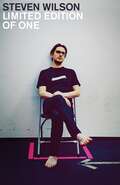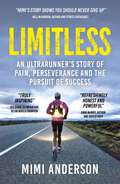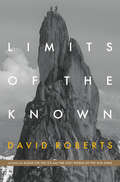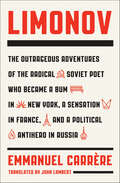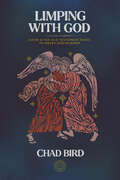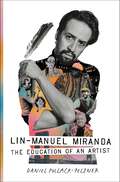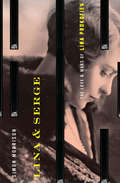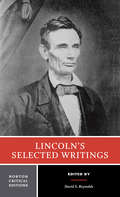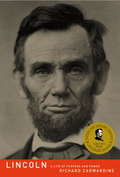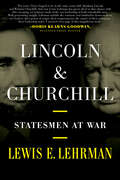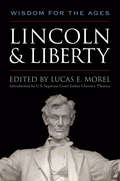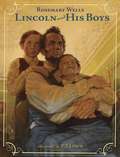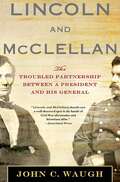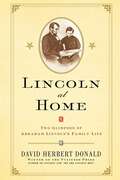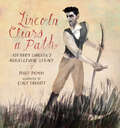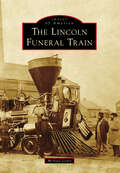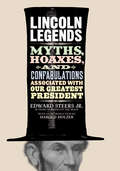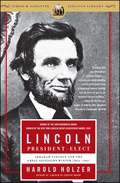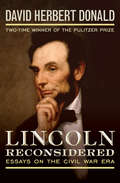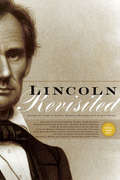- Table View
- List View
Limited Edition of One
by Steven WilsonThe more I thought about it, the more I realised my career has been unusual. How did I manage to do everything wrong but still end up on the front cover of magazines, headlining world tours and achieving Top 5 albums? How did I attract such obsessive and fanatical fans, many of whom take everything I do or say very personally, which is simultaneously flattering but can also be tremendously frustrating? Even this I somehow cultivated without somehow meaning to. My accidental career.Limited Edition of One is unlike any other music book you will ever have read.Part the long-awaited memoir of Steven Wilson: whose celebrated band Porcupine Tree began as teenage fiction before unintentionally evolving into a reality that encompassed Grammy-nominated records and sold-out shows around the world, before he set out for an even more successful solo career.Part the story of a twenty-first century artist who achieved chart-topping mainstream success without ever becoming part of the mainstream. From Abba to Stockhausen, via a collection of conversations and thought pieces on the art of listening, the rules of collaboration, lists of lists, personal stories, professional adventurism (including food, film, TV, modern art), old school rock stardom, how to negotiate an obsessive fanbase and survive on social media, and dream-fever storytelling.
Limited Edition of One
by Steven WilsonThe more I thought about it, the more I realised my career has been unusual. How did I manage to do everything wrong but still end up on the front cover of magazines, headlining world tours and achieving Top 5 albums? How did I attract such obsessive and fanatical fans, many of whom take everything I do or say very personally, which is simultaneously flattering but can also be tremendously frustrating? Even this I somehow cultivated without somehow meaning to. My accidental career.Limited Edition of One is unlike any other music book you will ever have read.Part the long-awaited memoir of Steven Wilson: whose celebrated band Porcupine Tree began as teenage fiction before unintentionally evolving into a reality that encompassed Grammy-nominated records and sold-out shows around the world, before he set out for an even more successful solo career.Part the story of a twenty-first century artist who achieved chart-topping mainstream success without ever becoming part of the mainstream. From Abba to Stockhausen, via a collection of conversations and thought pieces on the art of listening, the rules of collaboration, lists of lists, personal stories, professional adventurism (including food, film, TV, modern art), old school rock stardom, how to negotiate an obsessive fanbase and survive on social media, and dream-fever storytelling.
Limited Edition of One: How to Succeed in the Music Industry Without Being Part of the Mainstream
by Steven WilsonThe more I thought about it, the more I realised my career has been unusual. How did I manage to do everything wrong but still end up on the front cover of magazines, headlining world tours and achieving Top 5 albums? How did I attract such obsessive and fanatical fans, many of whom take everything I do or say very personally, which is simultaneously flattering but can also be tremendously frustrating? Even this I somehow cultivated without somehow meaning to. My accidental career.Limited Edition of One is unlike any other music book you will ever have read.Part the long-awaited memoir of Steven Wilson: whose celebrated band Porcupine Tree began as teenage fiction before unintentionally evolving into a reality that encompassed Grammy-nominated records and sold-out shows around the world, before he set out for an even more successful solo career.Part the story of a twenty-first century artist who achieved chart-topping mainstream success without ever becoming part of the mainstream. From Abba to Stockhausen, via a collection of conversations and thought pieces on the art of listening, the rules of collaboration, lists of lists, personal stories, professional adventurism (including food, film, TV, modern art), old school rock stardom, how to negotiate an obsessive fanbase and survive on social media, and dream-fever storytelling.
Limitless: An Ultrarunner's Story of Pain, Perseverance and the Pursuit of Success
by Lucy Waterlow Mimi AndersonDon’t limit your challenges. Challenge your limitsAt the age of 55, record-breaking ultrarunner Mimi Anderson embarked on her most ambitious adventure yet. She wanted to become the fastest woman in history to run across America from Los Angeles to New York.Her journey would cover 2,850 miles, 12 states and four time zones, dealing with extreme changes in terrain, weather and altitude along the way.For 40 days, the determined mother of three pushed herself on and on for more than 2,000 miles across the vast continent, despite the onset of severe pain, until she was forced to make a crushing decision: carry on and risk never being able to run again or give up on her all-time goal.What happened next set Mimi on a new, unexpected journey. She learned to face her fears and bounce back from defeat by taking up the new challenge of becoming a triathlete.A follow-up to her first memoir Beyond Impossible, this next instalment in Mimi’s inspiring story proves that when one door closes, another opens – you just need the courage to swim, cycle and run through it.
Limitless: An Ultrarunner's Story of Pain, Perseverance and the Pursuit of Success
by Lucy Waterlow Mimi AndersonDon’t limit your challenges. Challenge your limitsAt the age of 55, record-breaking ultrarunner Mimi Anderson embarked on her most ambitious adventure yet. She wanted to become the fastest woman in history to run across America from Los Angeles to New York.Her journey would cover 2,850 miles, 12 states and four time zones, dealing with extreme changes in terrain, weather and altitude along the way.For 40 days, the determined mother of three pushed herself on and on for more than 2,000 miles across the vast continent, despite the onset of severe pain, until she was forced to make a crushing decision: carry on and risk never being able to run again or give up on her all-time goal.What happened next set Mimi on a new, unexpected journey. She learned to face her fears and bounce back from defeat by taking up the new challenge of becoming a triathlete.A follow-up to her first memoir Beyond Impossible, this next instalment in Mimi’s inspiring story proves that when one door closes, another opens – you just need the courage to swim, cycle and run through it.
Limitless: The Power of Hope and Resilience to Overcome Circumstance
by Mallory WeggemannThe Paralympic gold-medalist, world champion swimmer, ESPY winner, and NBC Sports commentator uses her extraordinary story to equip others to meet whatever challenges they face in life.On January 21, 2008, a routine medical procedure left Mallory Weggemann paralyzed from her waist down. Less than two years later, Mallory had broken eight world records, and by the 2012 Paralympic Games, she held fifteen world records and thirty-four American records. Two years later a devastating fall severely damaged her left arm, yet Mallory refused to give up. After two reconstructive surgeries and extended rehab, she won two golds and a silver at the 2019 World Para Swimming Championships. And perhaps most significantly, she found confidence, independence, and persevering love as she walked down the aisle on her wedding day.Mallory's extraordinary resilience and uncompromising commitment to excellence are rooted in her resolve, perseverance, and sheer grit. In this remarkable new book, Mallory shares the lessons she learned by pushing past every obstacle, expectation, and limitation that stood in her way, including the need to:redefine limitations;remember that healing is not chronological;be willing to fail;and embrace your comeback.Mallory's story reminds us that whatever circumstances we face, we have the capacity to face down whatever challenges, labels, or difficulties confront us--and to do so on our own terms.
Limitless: The bestselling story of Britain’s inspirational astronaut
by Tim PeakeThe inspirational autobiography of Britain’s beloved astronaut Tim Peake, the #1 bestselling author of Hello, is this Planet Earth? and Ask an AstronautAs heard on BBC Radio 4 Desert Island Discs__________________'What surprised me was how entirely serene I felt. I was weightless, no forces exerting themselves on my body. To my left was the Space Station. Below me, gradually going into shadow, was the Earth. And over my right shoulder was the universe.'In fascinating and personal detail, and drawing on exclusive diaries and audio recordings from his mission, astronaut Tim Peake takes readers closer than ever before to experience what life in space is really like: the sights, the smells, the fear, the sacrifice, the exhilaration and the deep and abiding wonder of the view.Warm, inspiring and often funny, Tim also charts his surprising road to becoming an astronaut, from a shy and unassuming boy from Chichester who had a passion for flight, to a young British Army officer, Apache helicopter pilot, flight instructor and test pilot who served around the world. Tim's extensive eighteen-year career in the Army included the command of a platoon of soldiers in Northern Ireland during the Troubles, deployment in Bosnia, and operations in Afghanistan.Full of life lessons for readers of all ages, Limitless is the story of how ordinary can become extraordinary.__________________'For someone who has literally been out of this world Tim's an incredibly down to earth guy and I think you'll be amazed at some of the things he has done ... it's so inspiring to know that even going into space didn't change him as much as being a parent did.' JOE WICKS'Tim is one of our nation's good guys - and his story is a testament to his courage, kindness and a never-give-up spirit.' BEAR GRYLLS'Full of courage, camaraderie and daring escapades, this reads like a Boys' Own adventure' MIRROR'A fantastic book' PIERS MORGAN'Fasten your seatbelt for an exhilarating read ... His accounts of blasting into orbit at 25 times the speed of sound and floating, weightless, around the space station are enthralling.' EXPRESSBestseller in the UK, Sunday Times, October 2020
Limits of the Known
by David RobertsA celebrated mountaineer and author searches for meaning in great adventures and explorations, past and present. David Roberts, "veteran mountain climber and chronicler of adventures" (Washington Post), has spent his career documenting voyages to the most extreme landscapes on earth. In Limits of the Known, he reflects on humanity’s—and his own—relationship to extreme risk. Part memoir and part history, this book tries to make sense of why so many have committed their lives to the desperate pursuit of adventure. In the wake of his diagnosis with throat cancer, Roberts seeks answers with sharp new urgency. He explores his own lifelong commitment to adventuring, as well as the cultural contributions of explorers throughout history: What specific forms of courage and commitment did it take for Fridtjof Nansen to survive an eighteen-month journey from a record "farthest north" with no supplies and a single rifle during his polar expedition of 1893–96? What compelled Eric Shipton to return, five times, to the ridges of Mt. Everest, plotting the mountain’s most treacherous territory years before Hillary and Tenzing’s famous ascent? What drove Bill Stone to dive 3,000 feet underground into North America’s deepest cave? What motivates the explorers we most admire, who are willing to embark on perilous journeys and push the limits of the human body? And what is the future of adventure in a world we have mapped and trodden from end to end?
Limonov: The Outrageous Adventures of the Radical Soviet Poet Who Became a Bum in New York, a Sensation in France, and a Political Antihero in Russia
by Emmanuel Carrère“The amazing, improbable life of [the] Ukrainian writer, adventurer and would-be revolutionary . . . Carrère has turned it into an equally spectacular book.” —Michael Dirda, The Washington PostThis is how Emmanuel Carrère, the magnetic journalist, novelist, filmmaker, and chameleon, describes his subject: “Limonov is not a fictional character. There. I know him. He has been a young punk in Ukraine, the idol of the Soviet underground; a bum, then a multimillionaire’s butler in Manhattan; a fashionable writer in Paris; a lost soldier in the Balkans; and now, in the fantastic shambles of postcommunism, the elderly but charismatic leader of a party of young desperadoes. He sees himself as a hero; you might call him a scumbag: I suspend my judgment on the matter. It’s a dangerous life, an ambiguous life: a real adventure novel. It is also, I believe, a life that says something. Not just about him, Limonov, not just about Russia, but about all our history since the end of the Second World War.”So Eduard Limonov isn’t fictional—but he might as well be. This pseudobiography isn’t a novel, but it reads like one: from Limonov’s grim childhood to his desperate, comical, ultimately successful attempts to gain the respect of Russia’s literary intellectual elite; to his immigration to New York, then to Paris; to his return to the motherland. Limonov could be read as a charming picaresque. But it could also be read as a troubling counternarrative of the second half of the twentieth century, one that reveals a violence, an anarchy, a brutality, that the stories we tell ourselves about progress tend to conceal.“A picaresque gonzo biography.” —Rachel Donadio, The New York Times
Limping with God: Jacob & The Old Testament Guide to Messy Discipleship
by Chad BirdJacob seems to be anything but a model disciple. He's a trickster, liar, and selfishly ambitious man who fathers children with four women and leads a dysfunctional family rife with jealousy and backstabbing. But Jacob is also Israel, the namesake of the Old Testament community of God, chosen and blessed. As such, this sinner-saint, who limps along with the Lord, burdened by weakness and beset by problems, is the mirror image of all of us who follow Jesus. In his life we see our lives, our struggles, our failures, and most especially the God who loves us and chooses us as his own. As we explore his bio, from his wrangling in the womb with Esau to his death as an old man in Egypt, we will learn more about ourselves and the God who is with us and for us in Jesus the Messiah.
Lin-Manuel Miranda: The Education of an Artist
by Daniel Pollack-PelznerAn intimate and captivating exploration of Lin-Manuel Miranda&’s artistic journey, revealing how the creator of the Broadway musicals Hamilton and In the Heights found his unique voice through bold collaborations, redefining the world of musical theater.How did Lin-Manuel Miranda, the sweet, sensitive son of Puerto Rican parents from an immigrant neighborhood in Manhattan, rise to become the preeminent musical storyteller of the 21st century? Lin-Manuel Miranda: The Education of an Artist is his incredible story as never told before, tracing Miranda&’s path from an often isolated child to the winner of multiple Tonys and Grammys for his Broadway hits Hamilton and In the Heights; a global chart-topping sensation for his songs in Disney&’s Moana and Encanto; and the recipient of a Pulitzer Prize and a MacArthur Genius Grant. Miranda&’s journey is a testament to the power of creativity, collaboration, and cultural synthesis. He was not a musical prodigy, but an insatiable drive to create art and learn from those around him propelled him to fuse his Latino heritage with pop, hip-hop, and the musical styles of Broadway. His was a new way of telling American stories, and of speaking to new audiences. Drawing on interviews with Miranda&’s family, friends, and mentors—and many conversations with Miranda himself—Daniel Pollack-Pelzner delves into the formative experiences that shaped Miranda as an artist, from his early musicals in high school and college to the creation of his Broadway and Hollywood triumphs. With full access to Miranda&’s inner circle, this behind-the-scenes origin story is sure to captivate his legions of fans and beyond.
Lina & Serge: The Love and Wars of Lina Prokofiev
by Simon MorrisonThis account of the renowned composer&’s neglected wife—including her years in a Soviet prison—is &“a story both riveting and wrenching&” (Kirkus Reviews, starred review). Serge Prokofiev was one of the twentieth century&’s most brilliant composers yet is an enigma to historians and his fans. Why did he leave the West and move to the Soviet Union despite Stalin&’s crimes? Why did his astonishing creativity in the 1930s soon dissolve into a far less inspiring output in his later years? The answers can finally be revealed, thanks to Simon Morrison&’s unique and unfettered access to the family&’s voluminous papers and his ability to reconstruct the tragic, riveting life of the composer&’s wife, Lina. Morrison&’s portrait of the marriage of Lina and Serge Prokofiev is the story of a remarkable woman who fought for survival in the face of unbearable betrayal and despair and of the irresistibly talented but heartlessly self-absorbed musician she married. Born to a Spanish father and Russian mother in Madrid at the end of the nineteenth century and raised in Brooklyn, Lina fell in love with a rising-star composer—and defied convention to be with him, courting public censure. She devoted her life to Serge and art, training to be an operatic soprano and following her brilliant husband to Stalin&’s Russia. Just as Serge found initial acclaim—before becoming constricted by the harsh doctrine of socialist-realist music—Lina was at first accepted and later scorned, ending her singing career. Serge abandoned her and took up with another woman. Finally, Lina was arrested and shipped off to the gulag in 1948. She would be held in captivity for eight awful years. Meanwhile, Serge found himself the tool of an evil regime to which he was forced to accommodate himself. The contrast between Lina and Serge is one of strength and perseverance versus utter self-absorption, a remarkable human drama that draws on the forces of art, sacrifice, and the struggle against oppression. Readers will never forget the tragic drama of Lina&’s life, and never listen to Serge&’s music in quite the same way again.
Lincoln
by David S. ReynoldsLincoln's Selected Writings includes a rich selection of his public and private letters, speeches, eulogies, proposals, debate transcriptions, addresses (including the First and Second Inaugurals), and more. The texts are accompanied by explanatory annotations, a detailed preface, a note on the texts, and a list of abbreviations. Lincoln's writings are followed by contemporary responses to him in poems, songs, and articles; representations of Lincoln in modern imaginative and nonfiction writing; and selections from recent cross-disciplinary studies of Lincoln--including discussions of his literary techniques and oratorical style as well as examinations of his political evolution in new cultural and social contexts. Among the many contributors are Horace Greeley, Jesse Hutchinson, Nathaniel Hawthorne, Karl Marx, Ralph Waldo Emerson, Harriet Beecher Stowe, Victor Hugo, and Walt Whitman. "Modern Views" presents sixteen major interpretations of Lincoln's life, work, and legacy carefully chosen to promote discussion. The contributors are Carl Sandburg, Allen C. Guelzo, James Oakes, Gillian Silverman, Richard N. Current, Harold Holzer, Sean Wilentz, Eric Foner, Manisha Sinha, Robert A. Ferguson, Gabor Boritt, James McPherson, Stephen Cushman, Faith Barrett, David S. Reynolds, and Richard Carwardine and Jay Sexton. A chronology, selected bibliography, and index are also included.
Lincoln
by Richard CarwardineCarwardine (American history, Oxford U. ) received the Lincoln Award--the first British scholar to do so--for this biography, originally published in 2003 by Pearson/Longman. Half of it addresses Lincoln's (1809-65) career and the roots of his political ambition before he became president of the US. Annotation ©2006 Book News, Inc. , Portland, OR (booknews. com)
Lincoln & Churchill: Statesmen at War
by Lewis E Lehrman&“With penetrating insight, Lehrman unfolds the contrasts and similarities between these two leaders . . . I savored every page of this magnificent work.&”—Doris Kearns Goodwin, #1 New York Times-bestselling author of Team of Rivals: The Political Genius of Abraham Lincoln Winner of the Abraham Lincoln Institute of Washington&’s 2019 book prize Lewis E. Lehrman, a renowned historian and National Humanities Medal winner, gives new perspective on two of the greatest English-speaking statesmen—and their remarkable leadership in wars of national survival. Abraham Lincoln and Winston Churchill, as commanders in chief, led their nations to victory—Lincoln in the Civil War, Churchill in World War II. They became revered leaders—statesmen for all time. Yet these two world-famous war leaders have never been seriously compared at book length. Acclaimed historian Lewis Lehrman, in his pathbreaking comparison of both statesmen, finds that Lincoln and Churchill—with very different upbringings and contrasting personalities—led their war efforts, to some extent, in similar ways. As supreme war lords, they were guided not only by principles of honor, duty, and freedom, but also by the practical wisdom to know when, where, and how to apply these principles. Even their writings and speeches were swords in battle. Gifted literary stylists, both men relied on the written and spoken word to steel their citizens throughout desperate and prolonged wars. And both statesmen unexpectedly left office near the end of their wars—Lincoln by the bullet, Churchill by the ballot. They made mistakes, which Lehrman considers carefully. But the author emphasizes that, despite setbacks, they never gave up. &“Deeply researched and elegantly written. . . . a valuable contribution to our knowledge of the past. By expertly conjoining two great leaders in a single volume, he has enhanced our understanding of both.&” ―The Wall Street Journal Includes illustrations and photographs
Lincoln & Liberty: Wisdom for the Ages
by Lucas E. MorelEssays exploring the sixteenth president&’s political philosophy. Generations of Americans have studied Abraham Lincoln&’s life, presidency, and leadership, often remaking him into a figure suited to the needs and interests of their own time. This illuminating volume takes a different approach to his political thought and practice. Here, a distinguished group of contributors argue that Lincoln&’s relevance today is best expressed by rendering an accurate portrait of him in his own era. They seek to understand Lincoln as he understood himself and as he attempted to make his ideas clear to his contemporaries. What emerges is a portrait of a prudent leader who is driven to return the country to its original principles in order to conserve it. The contributors demonstrate that, far from advocating an expansion of government beyond its constitutional limits, Lincoln defended both the Declaration of Independence and the Constitution. In his introduction, Justice Clarence Thomas discusses how Lincoln used the ideological and structural underpinnings of those founding documents to defeat slavery and secure the liberties that the Republic was established to protect. Other chapters reveal how Lincoln upheld the principle of limited government even as he employed unprecedented war powers. Featuring contributions from leading scholars such as Michael Burlingame, Allen C. Guelzo, Fred Kaplan, and Matthew Pinsker, this innovative collection presents fresh perspectives on Lincoln both as a political thinker and a practical politician. Taken together, these essays decisively demonstrate that the most iconic American president still has much to teach the modern-day student of politics.
Lincoln And His Boys
by Rosemary Wells P. J. LynchA warm, moving portrait of Abraham Lincoln told through the eyes of his children and captured in exquisite full-color illustrations. Historians claim him as one of America's most revered presidents. But to his rambunctious sons, Abraham Lincoln was above all a playful and loving father. Here is Lincoln as seen by two of his boys: Willie, thrilled to be on his first train trip when Lincoln was deciding to run for president; Willie and Tad barging into Cabinet meetings to lift Lincoln's spirits in the early days of the Civil War, Tad accompanying him to Richmond just after the South's defeat. With the war raging and the Union under siege, we see history unfolding through Willie's eyes and then through Tad's -- and we see Lincoln rising above his own inborn sadness and personal tragedy through his devotion to his sons. With evocative and engaging illustrations by P. J. Lynch, Rosemary Wells offers a carefully researched biography that gives us a Lincoln not frozen in time but accessible and utterly real. Celebrate the bicentennial of Lincoln's birth, February 2009.
Lincoln And Mcclellan: The Troubled Partnership Between A President And His General
by John C. WaughThere was no more remarkable pair in the Civil War than Abraham Lincoln and George McClellan. At only 35 years old, McClellan commanded the Ohio troops early in the war, and won skirmishes for the Union in western Virginia. After the disastrous Union defeat at Bull Run in the summer of 1861, Lincoln sent word for McClellan to come to Washington, and soon elevated him to commander-in-chief of the Union army. But in the late summer and fall of 1861, things took a turn for the worst. Meticulous in his planning and preparations, McClellan began to delay attacking the enemy and developed a penchant for vastly overestimating the Confederate forces he faced. All of this hampered his ability to lead an aggressive force in a fast-moving battlefield environment. Finally losing his patience, Lincoln was famously quoted as saying, "If General McClellan does not want to use the army, I would like to borrow it for a time." Lincoln and McClellan takes an in-depth look at this fascinating relationship, from the early days of the Civil War to the 1864 presidential election when McClellan ran against Lincoln on an anti-war platform and lost. Here, award-winning author John C. Waugh weaves a tale of hubris, paranoia, failure, and triumph, illuminating as never before this unique and complicated alliance.
Lincoln At Home: Two Glimpses of Abraham Lincoln's Family Life
by David Herbert DonaldThis little book offers two glimpses of President Lincoln's life as a family man. The first section describes the Lincolns' life in the White House during the war whilst the second represents a collection of all the known letters exchanged by Abraham and Mary Lincoln and their children. Though most of the vast literature about Abraham Lincoln deals with his public life it is important to remember that Lincoln, during these critical events, also led a private life, defined by his intimate relationship with his wife and by his devotion to their children. Thus, by bringing these letters together, this book seeks to offer a portrait of Mrs. Lincoln unmarred by gossip and Abraham Lincoln as a devoted, if often desperately busy and distracted, family man.
Lincoln Clears a Path: Abraham Lincoln's Agricultural Legacy
by Peggy ThomasThroughout his life, Abraham Lincoln tried to make life easier for others. Then during the darkest days of the Civil War, when everyone needed hope, President Lincoln cleared a path for all Americans to a better future.As a boy, Abraham Lincoln helped his family break through the wilderness and struggle on a frontier farm. When Lincoln was a young man, friends made it easier for him to get a better education and become a lawyer, so as a politician he paved the way for better schools and roads. President Lincoln cleared a path to better farming, improved transportation, accessible education, and most importantly, freedom. Author Peggy Thomas uncovers Abraham Lincoln's passion for agriculture and his country while illustrator Stacy Innerst cleverly provides a clear look as President Lincoln strives for positive change.
Lincoln Funeral Train, The (Images of America)
by Michael LeavyThe effective end of the American Civil War on April 9, 1865, had hardly sunk in when, only five days later, another disaster stunned the battered and bloodied nation. On the night of April 9, Pres. Abraham Lincoln was assassinated. There would be time for vengeful thoughts later, but first the Great Emancipator was going to get a royal send-off. At the center of what would become a three-week national funeral was a spectacular train that would carry Lincoln's remains, and those of his deceased son, from Washington, DC, to Springfield, Illinois. "The Lincoln Special" steamed slowly out of spring mists, allowing thousands of mourners lining the tracks a lingering view. It was a logistics miracle; a romantic pageant of sorrow and wonder, carried off flawlessly. Through the tears, however, was a sense that America's identity had turned a corner and was about to enter a dynamic and hopeful future. Author of nine books, Michael Leavy is an avid Civil War and railroad historian. Leavy has searched through archives to locate rare photographs and new details and dispel some lingering myths surrounding this tragic but formative American event.
Lincoln Legends: Myths, Hoaxes, and Confabulations Associated with Our Greatest President
by Edward Steers Jr.&“Succinctly and eloquently debunks 14 popular myths about the Great Emancipator's life and death [with] solid documentation.&” —Publishers Weekly In the more than 150 years since his death, Abraham Lincoln has become America&’s most revered president. The mythmaking about this self-made man began early, some of it starting during his campaign for the presidency in 1860. As an American icon, Lincoln has been the subject of speculation and inquiry as authors and researchers have examined every aspect― personal and professional ―of the president&’s life. In Lincoln Legends, noted historian and Lincoln expert Edward Steers Jr. carefully scrutinizes some of the most notorious tall tales and distorted ideas about America&’s sixteenth president. Did he write his greatest speech on the back of an envelope on the way to Gettysburg? Did he appear before a congressional committee to defend his wife against charges of treason? Was he an illegitimate child? Did he have romantic encounters with women other than his wife—or love affairs with men? What really happened in the weeks leading up to April 14, 1865, and in the aftermath of Lincoln;s tragic assassination? Lincoln Legends evaluates the evidence on all sides of the many heated debates about the Great Emancipator, and also traces the often fascinating evolution of flawed theories about Lincoln and the motivations of the individuals―occasionally sincere but more often cynical, self-serving, and nefarious―who are responsible for their dispersal. Based on extensive primary research, Lincoln Legends will settle many of the enduring questions and persistent myths about Lincoln&’s life once and for all. &“Fascinating reading.&” —Tucson Citizen
Lincoln President-Elect
by Harold HolzerOne of our most eminent Lincoln scholars, winner of a Lincoln Prize for his Lincoln at Cooper Union, examines the four months between Lincoln's election and inauguration, when the president-elect made the most important decision of his coming presidency -- there would be no compromise on slavery or secession of the slaveholding states, even at the cost of civil war. Abraham Lincoln first demonstrated his determination and leadership in the Great Secession Winter -- the four months between his election in November 1860 and his inauguration in March 1861 -- when he rejected compromises urged on him by Republicans and Democrats, Northerners and Southerners, that might have preserved the Union a little longer but would have enshrined slavery for generations. Though Lincoln has been criticized by many historians for failing to appreciate the severity of the secession crisis that greeted his victory, Harold Holzer shows that the presidentelect waged a shrewd and complex campaign to prevent the expansion of slavery while vainly trying to limit secession to a few Deep South states. During this most dangerous White House transition in American history, the country had two presidents: one powerless (the president-elect, possessing no constitutional authority), the other paralyzed (the incumbent who refused to act). Through limited, brilliantly timed and crafted public statements, determined private letters, tough political pressure, and personal persuasion, Lincoln guaranteed the integrity of the American political process of majority rule, sounded the death knell of slavery, and transformed not only his own image but that of the presidency, even while making inevitable the war that would be necessary to make these achievements permanent. Lincoln President-Elect is the first book to concentrate on Lincoln's public stance and private agony during these months and on the momentous consequences when he first demonstrated his determination and leadership. Holzer recasts Lincoln from an isolated prairie politician yet to establish his greatness, to a skillful shaper of men and opinion and an immovable friend of freedom at a decisive moment when allegiance to the founding credo "all men are created equal" might well have been sacrificed.
Lincoln Reconsidered: Essays on the Civil War Era (Vintage Civil War Library)
by David Herbert DonaldA &“brilliant&” look at America&’s sixteenth president by the New York Times–bestselling, Pulitzer Prize–winning author of Lincoln (American Historical Review). First published in 1956 and revised and updated for the twenty-first century, Lincoln Reconsidered is a masterpiece of Civil War scholarship. In a dozen eloquent, witty, and incisive essays, the author of the definitive biography of Abraham Lincoln offers a fresh perspective on topics previously shrouded in myth and hagiography and brings the president&’s tough-mindedness, strategic acumen, and political flexibility into sharp focus. From Lincoln&’s patchwork education to his contradictory interpretations of the Constitution and the legacy of the Founding Fathers, David Herbert Donald reveals the legal mind behind the legend of the Great Emancipator. &“Toward a Reconsideration of the Abolitionists&” sheds new light on the radicalism of the antislavery movement, while &“Herndon and Mary Lincoln&” brilliantly characterizes the complicated relationship between two of the president&’s closest companions. &“Getting Right with Lincoln&” and &“The Folklore Lincoln&” draw on the methods of cultural anthropology to produce a provocative analysis of Lincoln as symbol. No historian has done more to enhance our understanding of Lincoln&’s presidency and the causes and effects of the Civil War than Donald. Lincoln Reconsidered is an entertaining and accessible introduction to his work and a must-read for every student of American history.
Lincoln Revisited: New Insights from the Lincoln Forum
by Harold Holzer Dawn VogelIn February 2009, America celebrates the bicentennial of the birth of Abraham Lincoln, and the pace of new Lincoln books and articles has already quickened. From his cabinet’s politics to his own struggles with depression, Lincoln remains the most written-about story in our history. And each year historians find something new and important to say about the greatest of our Presidents.Lincoln Revisited is a masterly guidePub to what’s new and what’s noteworthy in this unfolding story—a brilliant gathering of fresh scholarship by the leading Lincoln historians of our time. Brought together by The Lincoln Forum, they tackle uncharted territory and emerging questions; they also take a new look at established debates—including those about their own landmark works.Here, these well-known historians revisit key chapters in Lincoln’s legacy—from Matthew Pinsker on Lincoln’s private life and Jean Baker on religion and the Lincoln marriage to Geoffrey Perret on Lincoln as leader and Frank J. Williams on Lincoln and civil liberties in wartime.The eighteen original essays explore every corner of Lincoln’s world—religion and politics, slavery and sovereignty, presidential leadership and the rule of law, the Second Inaugural Address and the assassination.In his 1947 classic, Lincoln Reconsidered, David Herbert Donald confronted the Lincoln myth. Today, the scholars in Lincoln Revisited give a new generation of students, scholars, and citizens the perspectives vital for understanding the constantly reinterpreted genius of Abraham Lincoln.
